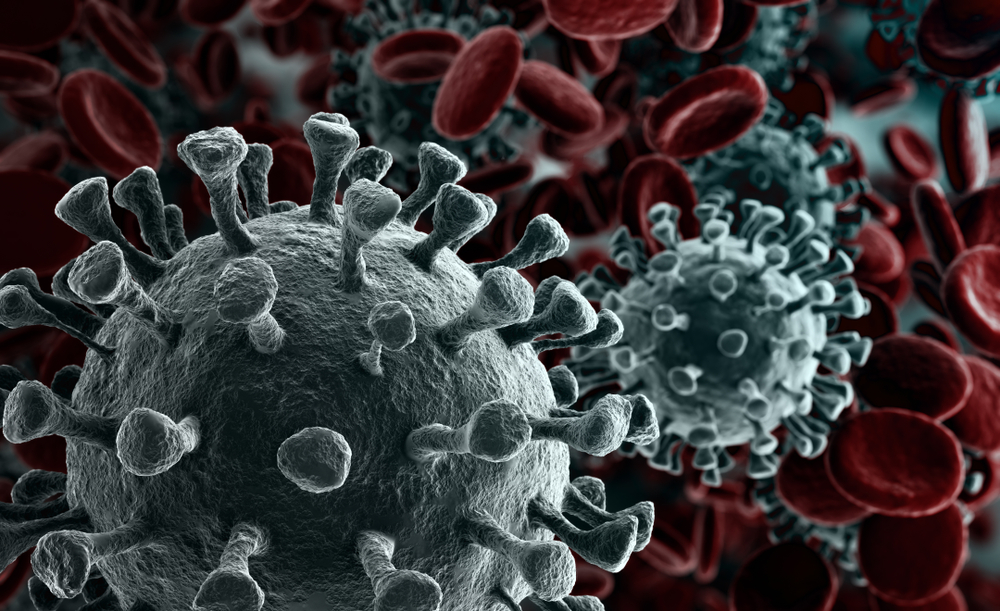
Image Credit: creativeneko/Shutterstock.com
On May 26, 2020, the United States Food and Drug Administration (FDA) provided Royal Philips with 510(k) clearance for its wearable Biosensor BX100 due to its ability to assist in the management of hospitalized COVID-19 patients.
Royal Philips, which is more commonly referred to as Philips in many countries worldwide, is an Amsterdam-based technology company that has developed hundreds of personal care, household, maternal and child care, lighting, automotive, sound, vision, and healthcare products.
Philips has designed medical alert systems within the healthcare sector, such as Lifeline and respiratory care solutions for the management of asthma and chronic obstructive pulmonary disease (COPD). It has also developed products such as SmartSleep, Light Therapy, and Sleep apnea therapy that, taken together, are centered on the goal of improving the quality and experience of sleep for people of all ages.
To further strengthen the healthcare system, particularly in the age of COVID-19, Philips has created the Biosensor BX100m. This wireless wearable sensor can monitor hospitalized COVID-19 patients and more accurately determine their treatment plans.
Biosensor BX100
Placed in a discreet location on the chest, the Philips Biosensor BX100 can collect up to 115 hours of data on patients' respiratory rate and heart rate. Changes in the respiratory rate of patients who have been diagnosed with severe acute respiratory syndrome coronavirus 2 (SARS-CoV-2) is the earliest predictor that healthcare providers use to evaluate clinical deterioration.
Clinicians have found that respiratory rate values will decline much earlier than any other vital signs. Traditionally, a patient’s respiratory rate is measured when the individual is at rest. The treating clinician will visually observe the patient and count their number of breaths according to each time their chest rises. Since this visual observation method is vulnerable to inconsistencies between healthcare providers and can be unreliable, the Biosensor BX100 offers a quantitative solution to this challenge.
Performance Capabilities
With a total weight of 10 grams, the Philips Biosensor BX100 is a comfortable and lightweight sensor that measures 96 millimeters (mm) in length and 61 mm in width.
The BX100 system comprises two fully encapsulated electrodes that can remain in place on a patient’s chest through the use of biocompatible adhesive materials. In addition to ensuring the biosensor's placement, these adhesive materials are also crucial for the electrical contact required for this sensor’s monitoring capabilities. Powered by a 3V primary battery cell, the BX100 has passed strenuous durability tests that confirm its ability to survive shock, vibration and a free fall of up to 1 meter (m). The respiratory rate range that can be monitored by the BX100 includes 3 to 40 respirations per minute (rpm), with an accuracy of ±3 rpm.
The heart rate measurement capabilities range from 30 to 220 beats per minute (bpm), with an accuracy of approximately 10% or ±5 bpm.
In addition to providing heart rate and respiratory rate measurements, the Biosensor BX100 can also provide up to 250 electrocardiograms (ECG) samples each second. The BX100 can also provide information on whether the patient is ambulating or not, their posture, and activity level within the range of 0, which means that the patient is at rest, up to level 3, which indicates high activity.
While the BX100 biosensor is a single-use product, it can be worn on the patient’s chest for a maximum of 120 hours or five days. This completely wireless sensor does not require the use of any wires or finger clips to maintain its position on patients. Additionally, the BX100 is waterproof, preventing any disruption in vital monitoring, even if the patient is wearing the sensor in the shower.
The automated and frequent measurements and recordings obtained by the BX100 are transmitted to healthcare providers, reducing errors that can arise during manual transcription while simultaneously increasing staff time and resources.
As patients move throughout the floor of their hospital ward, data collected from the BX100 is transmitted to multi-patient Bluetooth routers. This data is then sent through the hospital’s WiFi network to the IntelliVue GuardianSoftware, equipped with an algorithm that can detect any significant deviations that arise in a patient’s vital signs. If such events are detected, this powerful software will first verify this change's accuracy and then notify the caregivers to promote the delivery of early interventions.
The Impact of Philips’ Biosensors for COVID-19
In addition to clearance from the United States FDA, the Philips Biosensor BX100 has also received the CE Mark by the European Union.
The first installation of the BX100 was at the OLVG Hospital in the Netherlands, a top clinical, referral and training hospital that has responded to the COVID-19 pandemic by remotely treating both suspected and confirmed patients with COVID-19 who are housed in isolation rooms but do not require ventilation.
By incorporating the Philips patient detection solution of BX100, clinicians have found that this technology not only rapidly provides critical information to healthcare workers, but also reduces their exposure to COVID positive patients, lowering the staff demand for personal protective equipment (PPE).
Since healthcare professionals cannot walk in and out of COVID-19 patient rooms without their protective gear, the continuous patient monitoring by the BX100 biosensor ensures that all patients are closely monitored without compromising the health and safety of the hospital staff.
Detecting COVID-19 Symptoms with Draganfly's 'Pandemic Drone'
References and Further Reading
Philips wins 510(k) for sensor to detect COVID-19 patient deterioration [Online]. Available from: https://www.massdevice.com/philips-wins-510k-for-sensor-to-detect-covid-19-patient-deterioration/
Biosensor BX100 [Online]. Available from: https://www.usa.philips.com/healthcare
Philips launches next generation wearable biosensor for early patient deterioration detection, including clinical surveillance for COVID-19. Philips USA [Online]. Available from: https://www.usa.philips.com/healthcare
United States Food and Drug Administration Indications for Use [Online] Available from: https://www.accessdata.fda.gov/cdrh_docs/pdf19/K192875.pdf
Disclaimer: The views expressed here are those of the author expressed in their private capacity and do not necessarily represent the views of AZoM.com Limited T/A AZoNetwork the owner and operator of this website. This disclaimer forms part of the Terms and conditions of use of this website.